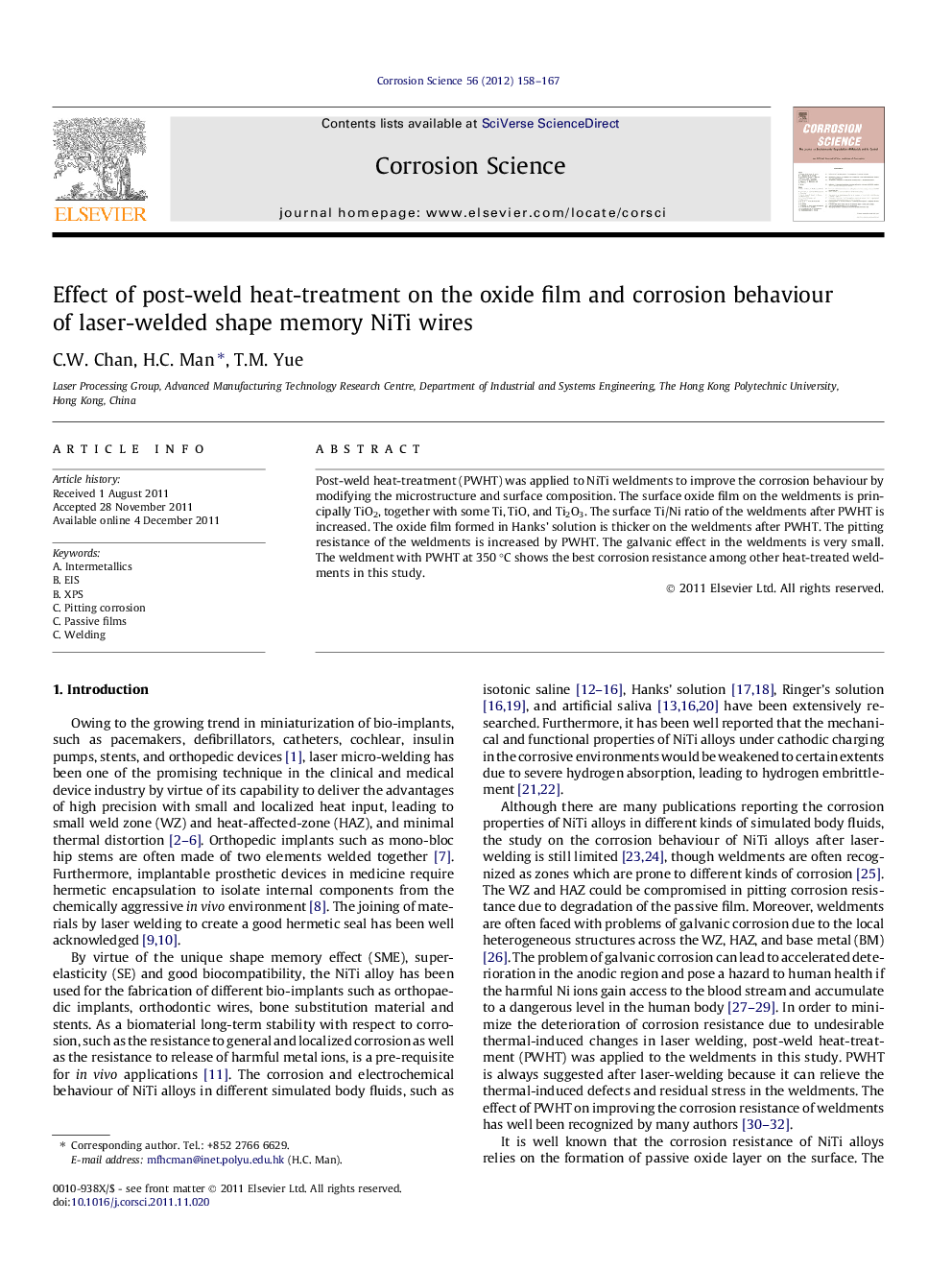| Article ID | Journal | Published Year | Pages | File Type |
|---|---|---|---|---|
| 1469884 | Corrosion Science | 2012 | 10 Pages |
Post-weld heat-treatment (PWHT) was applied to NiTi weldments to improve the corrosion behaviour by modifying the microstructure and surface composition. The surface oxide film on the weldments is principally TiO2, together with some Ti, TiO, and Ti2O3. The surface Ti/Ni ratio of the weldments after PWHT is increased. The oxide film formed in Hanks’ solution is thicker on the weldments after PWHT. The pitting resistance of the weldments is increased by PWHT. The galvanic effect in the weldments is very small. The weldment with PWHT at 350 °C shows the best corrosion resistance among other heat-treated weldments in this study.
► The corrosion resistance of welded NiTi wires is lowered by welding. ► The corrosion resistance can be improved by post-weld heat treatment at 350 °C. ► Improvement is attributed to change in microstructure and film composition. ► Galvanic effect is minimal in the weldment.
